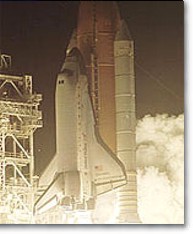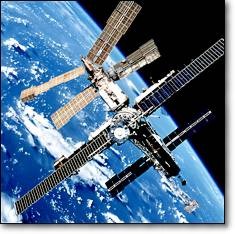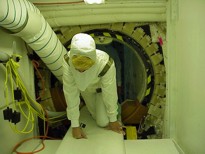 |
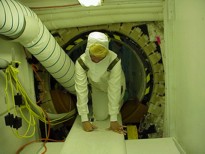 |
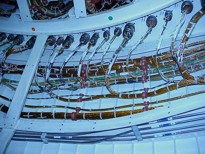 |
|
an internal space-walk in Shuttle Discovery |
not in space, just suitably garbed for the
pristine innards of the Discovery's subterranean crawlways |
neat, tidy, dust and lint-free, secured
wiring bundles with no stressful bend radius |
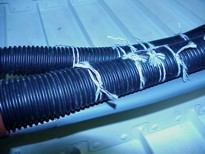 |
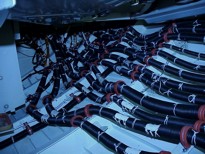 |
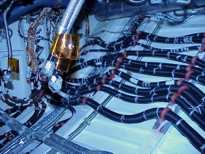 |
| Concertina'd conduit embraces the
wiring bundles and allows for the expansion and contraction of the heat
extremes in space, particularly in the cargo bay. |
Perhaps the wire bundles are so neatly
laid out and labeled because the astronauts are likely to be very
remote from maintenance at the point when they might need it. Landing at
the "nearest available" is not an option. |
Discovery is undergoing a down-time
maintenance period of about 20 months - so relax, these loose wires are on
a job-card - and a computer and someone qualified will get to them in
2002 or 2003. |
|
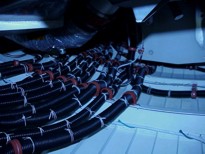 |
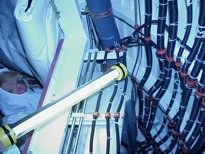 |
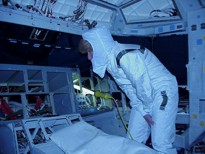 |
| If you compared these neatly labeled
dust and lint-free conduits and wire-bundles with an aged airliner's
innards, you just might notice some differences. |
It would appear that Shuttle wiring
layout is designed to accommodate a visual inspection by wander-light. |
No it's not the cockpit (or is it?) No
consolation prize for noting all the missing consoles. |
|
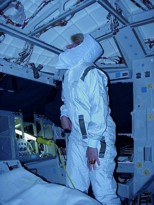 |
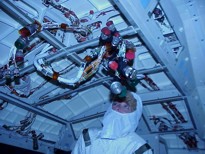 |
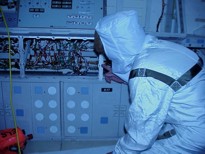 |
| Hmm? Maybe with all those thermal
tiles on the outer skin, they don't need those flammable mylar thermal/acoustic blankets
in here? Or maybe they'll come later.... |
And yes there is much aromatic
polyimide insulated wiring here, but NASA knows its vices and ensures
that that tiger never gets loose because of installation errors and
consequential damage. |
A place for everything - and
everything in its place. Obviously astronauts aren't all pilots and not
all astronauts would have an in-depth systems knowledge or
trouble-shooting ability. But what's the betting that you could call at
least one of them a Flight Engineer and he/she wouldn't object. |
|
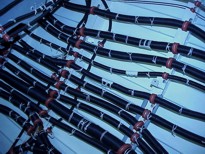 |
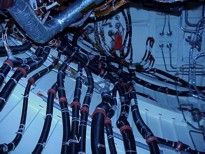 |
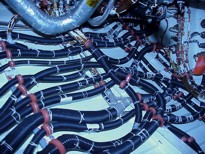 |
| Can you think of an extra hazard for
wiring in space? How's about a micro-meteorite hit? So I wonder how much
redundancy we're looking at here? |
Did you know that NASA nearly
lost a Shuttle (STS-93 -the first one with a Lady Commander) - due to an
undetected wiring flaw? That's when NASA started looking seriously at
wiring. On their first run-through they found 64 serious wiring flaws.
(see below) |
So you're up there in Space and you
have a wiring-initiated fire. Don space-suits and depressurize? Will
that work with an arcing fire, starving the fire of oxygen? Are you sure
of your answer? Bet their life on it? |
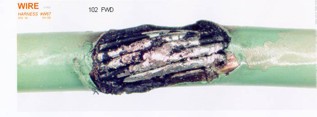 |
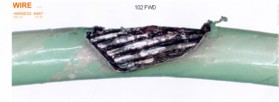 |
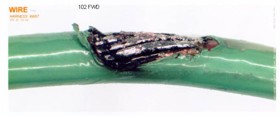 |
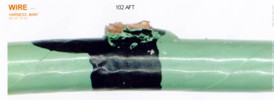 |
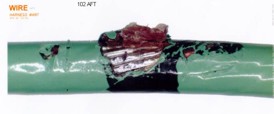 |
|
NASA Watch note: The above 5 photos show a bad wire on
the No.1 engine that flew on Columbia on the STS-93 mission.
(see blowup links by clicking thumbnail images in these 5 panels
above)
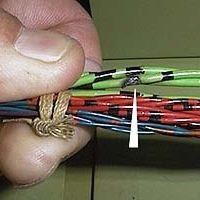
"The 5 individual wire pictures above are not from the new wire
damage found (64 cases). They are all from the initial find. The photos
with the legend FWD on them are of the segment that actually shorted to
the screw head. The photos with the legend AFT were discovered at the
same time (about 2-3 inches away from the short) over a screw head on
the aft side of the joint that did not short (no arcing noted on
the screw head). The new wire damage was in a different area of the
payload bay and was thought to be just top-coat damage (the insulation's
outside paint). Failure analysis of that wire reported that two layers
were removed due to abrasion (rubbing, aka chafeing). Based on all the
data and the Criticality of the Main Engines, I strongly believe NASA
made the correct and only possible decision to inspect and protect these
Power lines going to the Main Engine Controllers prior to flight."
|

